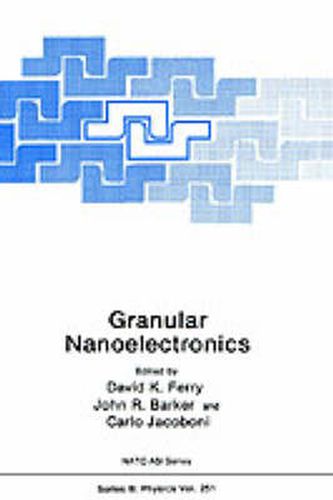Readings Newsletter
Become a Readings Member to make your shopping experience even easier.
Sign in or sign up for free!
You’re not far away from qualifying for FREE standard shipping within Australia
You’ve qualified for FREE standard shipping within Australia
The cart is loading…






This title is printed to order. This book may have been self-published. If so, we cannot guarantee the quality of the content. In the main most books will have gone through the editing process however some may not. We therefore suggest that you be aware of this before ordering this book. If in doubt check either the author or publisher’s details as we are unable to accept any returns unless they are faulty. Please contact us if you have any questions.
The technological means now exists for approaching the fundamentallimiting scales of solid state electronics in which a single carrier can, in principle, represent a single bit in an information flow. In this light, the prospect of chemically, or biologically, engineered molccular-scale structures which might support information processing functions has enticed workers for many years. The one common factor in all suggested molecular switches, ranging from the experimentally feasible proton-tunneling structure, to natural systems such as the micro-tubule, is that each proposed structure deals with individual information carrying entities. Whereas this future molecular electronics faces enormous technical challenges, the same Iimit is already appearing in existing semiconducting quantum wires and small tunneling structures, both superconducting and normal meta! devices, in which the motion of a single eh arge through the tunneling barrier can produce a sufficient voltage change to cut-off further tunneling current. We may compare the above situation with today’s Si microelectronics, where each bit is encoded as a very !arge number, not necessarily fixed, of electrons within acharge pulse. The associated reservoirs and sinks of charge carriers may be profitably tapped and manipulated to proviele macro-currents which can be readily amplified or curtailed. On the other band, modern semiconductor ULSI has progressed by adopting a linear scaling principle to the down-sizing of individual semiconductor devices.
$9.00 standard shipping within Australia
FREE standard shipping within Australia for orders over $100.00
Express & International shipping calculated at checkout
This title is printed to order. This book may have been self-published. If so, we cannot guarantee the quality of the content. In the main most books will have gone through the editing process however some may not. We therefore suggest that you be aware of this before ordering this book. If in doubt check either the author or publisher’s details as we are unable to accept any returns unless they are faulty. Please contact us if you have any questions.
The technological means now exists for approaching the fundamentallimiting scales of solid state electronics in which a single carrier can, in principle, represent a single bit in an information flow. In this light, the prospect of chemically, or biologically, engineered molccular-scale structures which might support information processing functions has enticed workers for many years. The one common factor in all suggested molecular switches, ranging from the experimentally feasible proton-tunneling structure, to natural systems such as the micro-tubule, is that each proposed structure deals with individual information carrying entities. Whereas this future molecular electronics faces enormous technical challenges, the same Iimit is already appearing in existing semiconducting quantum wires and small tunneling structures, both superconducting and normal meta! devices, in which the motion of a single eh arge through the tunneling barrier can produce a sufficient voltage change to cut-off further tunneling current. We may compare the above situation with today’s Si microelectronics, where each bit is encoded as a very !arge number, not necessarily fixed, of electrons within acharge pulse. The associated reservoirs and sinks of charge carriers may be profitably tapped and manipulated to proviele macro-currents which can be readily amplified or curtailed. On the other band, modern semiconductor ULSI has progressed by adopting a linear scaling principle to the down-sizing of individual semiconductor devices.